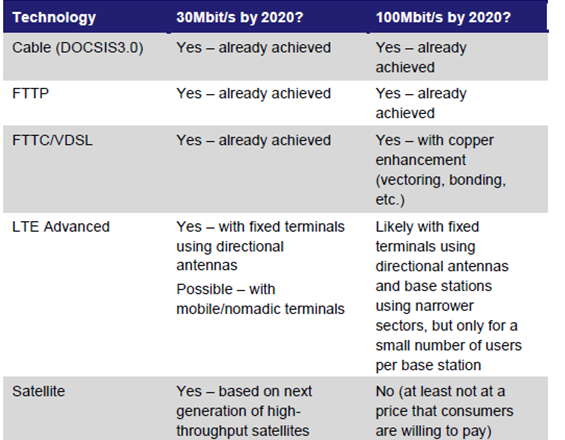 Patrick Lopez
Patrick Lopez
Responsable de Innovación en Redes en Telefónica I + D
The European Digital Agenda (EDA) targets are challenging, but achievable by the telecom companies through a mix of technologies, according the report presented yesterday in Brussels “Policy orientations to reach the EDA targets“, elaborated by Analysys Mason.
So, for 2020, the 30Mbit/s coverage target throughout the EU will be at hand, while widespread consumer subscriptions of 100Mbit/s-services will be also achievable in most member states.
How? The different technologies should perform their role, said the report:
- Wireless networks will play an important role in delivering 30Mbit/s coverage especially in rural areas. The 800MHz digital dividend spectrum is well-suited to this application but additional low-frequency spectrum may be needed in order to maintain high quality service as take-up increases. Consequently, member states which have not yet assigned the 800MHz spectrum should do so as soon as possible.
- Cable is best placed to deliver 100Mbit/s coverage quickly in those member states where it has footprint since its upgrading effort is more modest. However for EU widespread coverage, other competing technologies are necessary and will deployed gradually at a speed that is very much depending on whether the regulatory framework is revisited.
- Stimulate the demand is key for NGA deployment and so public policy should be devoted to increasing the actual take-up and expanding coverage in NGA white areas. To this end, public campaigns to increase awareness of the benefits of NGA and commercial flexibility for operators are both important factors in encouraging future investment. For example, can be useful initiatives like “Race Online 2012”, launched by the UK Government to get an additional 10 million people online.
- Finally, to ensure compliance with the objectives of the agenda -Analysys Mason explains- it is also necessary the improvement of investment conditions (particularly the extent to which regulation encourages investment), investors’ perception and the degree of implementation of technologies.








